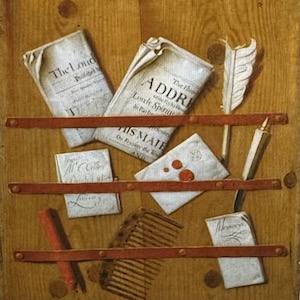London Lives: Poverty, Crime and the Making of a Modern City, 1690–1800
London Lives: Poverty, Crime and the Making of a Modern City, 1690–1800 is a collaborative history online project between the University of Hertfordshire and the University of Sheffield. This digital resource focuses on the perspectives of common Londoners in the 18th century, making available, in a fully digitized and searchable form, a wide range of primary sources about 18th-century London. It includes over 240,000 manuscripts and printed pages from eight London archives and is supplemented by 15 datasets created by other projects. It also provides access to historical records containing over 3.5 million name instances. By using records of institutions (e.g., courts, parishes, hospitals) to show what daily life was like for 18th-century plebeian Londoners, London Lives tries to demonstrate that the pressures created by plebeian to criminal justice, poor relief, and other social services shaped the development of these institutions.
The core section is "Browse," which allows users to explore the primary sources based on document type, such as letters, account books, minute books, criminal registers of prisoners, general orders of the court, coroners' inquests into suspicious deaths, apprenticeship indentures, and registers of paupers. In each of these sources, users can see the original document, magnify the handwritten text, and refer to a typed, translated version of the original text. "Search" provides several search bars, allowing users to search the whole of the London Lives website for any text string or phrase, and limit their search to keywords, document types, and date. The "Lives" features already compiled biographies, including both plebeians and the officers who manned the institutions of government and social welfare. Users can search these biographies by individual names or by keyword, the latter of which includes some that are more colorful: burglary, highway robbery, theft, and workhouse. Each bibliography also features a table of contents to give an initial overview of themes, as well as links to specific primary sources that help tell each Londoner’s story. Additionally, the section "Historical Backgrounds" provides a series of research guides that provide first-time users with a comprehensive account of the contexts, including local government, criminal justice, the poor law and charity, and guilds and hospitals. This section also offers a bibliography with all of the sources referenced on the site, which also serves as a solid starting point for anyone interested in conducting further research in 18th-century London.
London Lives provides access to the largest body of transcribed manuscripts ever created. Though errors are common and these methods for digitizing and marking information are sometimes faulty, the data available is sufficiently encoded to make the datasets useful. This resource provides users and researchers with answers on how plebeian Londoners fit into the historical space of London. That would reshape how we understand the social and economic place of these individuals in ways that match what we know of London elites. In sum, much of the charm of the project is that it documents the history of the everyday man, woman and child not simply the often-told stories of political figures and celebrities. By exploring those materials, the London Lives makes us realize that ordinary British people were agents of history merely by going about their everyday lives. Therefore, London Lives breaks the separation between the worlds of political activists and ordinary citizens and provides historical evidence which was out of the scope of either party records or newspaper accounts. It re-focuses the research on London Lives away from Elite Londoners to individuals who are underrepresented despite a wealth of archival material and datasets. The London Lives materials afford us an opportunity to not only hear the voices of the past, but to think about the ambiguities of those voices.
